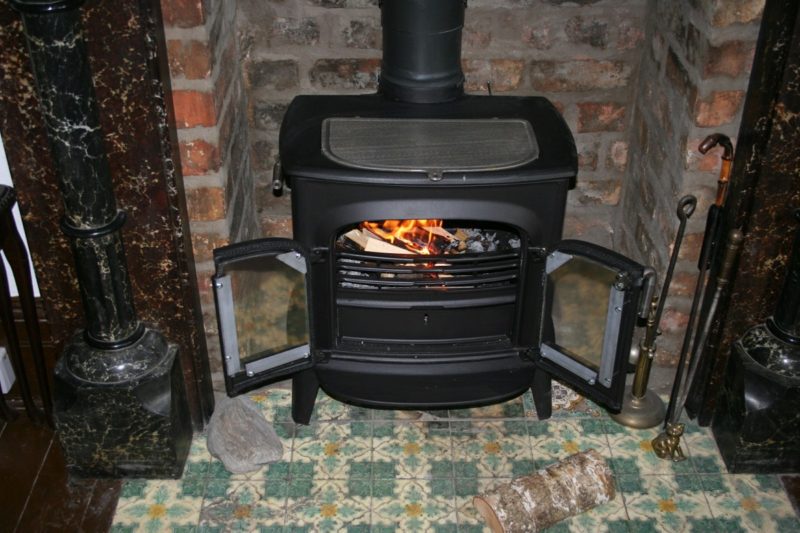The question is: how to seal wood stove chimney pipe? Over time, the flute might undergo regular wear and tear, requiring a new dye covering. In addition, it may imply bad news for your house, such as an uncomfortable design, more energy usage, and, not to mention, an exposed flue pipe that might harm your building’s inside.
A fireplace, furnace, or even a heater may have a flue pipe. The equipment is required to unload exhaust gas and by-products for combustion, ensuring that your house is safe and pollution-free. Furthermore, a flue pipe provides secure ventilation for most heating components in your home. However, this might entail a lot of costly maintenance for you in the future if not properly sealed.

Why Is It Important To Seal A Chimney Pipe?
Within the chimney, there are chimney flue pipes. Most flue pipes are straight, isolated, and are typically made of heat-resistant and energy-saving materials, such as brick, tile, and ceramic for better channel drains. Carbon monoxide is the most prevalent safety concern for chimneys and gas stoves. Therefore, it is essential to ensure that your flue pipes are adequately screened and secured.
Because conventional fireplace damper leaks, sealing your fireplace stream during the off-season is a smart idea if you don’t use it. It is not the same as screening the stream that runs the chimney length. If the fireplace is not used, you may screen the chimney from your home to avoid draught. A silicone rubber seal or an inflatable sealant are two options for easy chimney sealing. Both are more effective than ordinary dampers when screening the flue and are moderately priced.
These are available from chemistry, masonry, and internet supply companies.
Flue Sealing Techniques
The structure’s clearance standards are involved in the screened materials used to control a flow (a furnace, a heating system, or a chimney). For example, built regulations generally require a 1-inch clearance from metal flues as flue pipes from any fuel source are extremely hot.
Energy Star also recommends special materials for specific heating equipment for flows, vents, and pipes. For example, you should use high-temperature, galvanized metal pipes, aluminum flashing, and silicone cooling in furnaces and water heaters. Aluminum flashing pipes made from brick or metal should be used similarly for a fireplace and high-temperature silicone squeezing pipes.
A cast-iron or PVC pipe must be utilized for plumbing and the growing mold or caulking area filled.
Steps To Seal Wood Stove Chimney
How to seal wood stove chimney pipe? There is a flue screening along with the chimney. You can build yourself a flue channel if you have a fundamental grasp of house renovation. Although you don’t have to be an expert, you should take an inspection to make sure everything is in the right place. Now, let’s learn how to seal a stovepipe.
Step #1. Clean the chimney
Before anything else, you’d need to clear out the chimney first. You can never be too vigilant about carbon monoxide and combustion by-products. The screening of the flue pipe is included in the assembly process. Firstly, the chimney has to be cleaned properly. Get rid of any rubbish, insects, or old soot.
Step #2. Check for damages
If you notice missing bricks or damaged masonry during your examination, you should contact a professional and defer the installation. The flue is made of sheets of metal. Spread out the sheets and roll them in to fit into the chimney, and attach them around the sides with screws.
Step #3. Adding a string
You may add a string to your flue kit to enable you to place the sheets in the chimney and secure them to the cap. The flue line is then put into the chimney and lowered. After that, the flue is then screened with a band which is included in your delivery. Again, it is essential to restrict the flow to prevent fumes from leaving the house.
Chimney Pipes And Stoves
Oven pipes and fireplace pipes are found in wood or gas stoves. The pipes travel from the stove to the chimney, which leads straight to the chimney and eliminates the gases. If you have a wood or gas stove fireplace, the fireplace tube must be sealed to the chimney.
That is a straightforward procedure, starting with the furnace pipe in line with the chimney.
The chimney pipe is squeezed at one end, and you’ll slide over the stove pipe and push it tightly together. Next, you have to boil the metal sheet with the right boiler bit and attach the sheet to the overlapping of the stove pipe with a self-tapping screw. Flue pipes are available in many forms and diameters. Anyway, you’d want to visit this article and learn what a catalytic wood stove is.
It’s A Wrap!
How to seal wood stove chimney pipe? There are several types of pipes, as you can see, including stove pipes, chimney pipes, and flue pipes. Each one is easy to screen and requires no particular understanding. Make sure any hole is covered because whatever pipe you use must appropriately remove dangerous gasses from your home.
The process is not as hard as it seems, right? By simply keeping in mind the steps to seal wood stove chimney pipe and the flue sealing techniques, you can get it done correctly. Regardless, old wood stoves manifest lots of problems. One example is this topic about “Why does my woodstove smoke when I open the door?” You can read that one to understand. Again, old wood stoves are prone to damage. That is why you should clean them and maintain them regularly. That is all.
